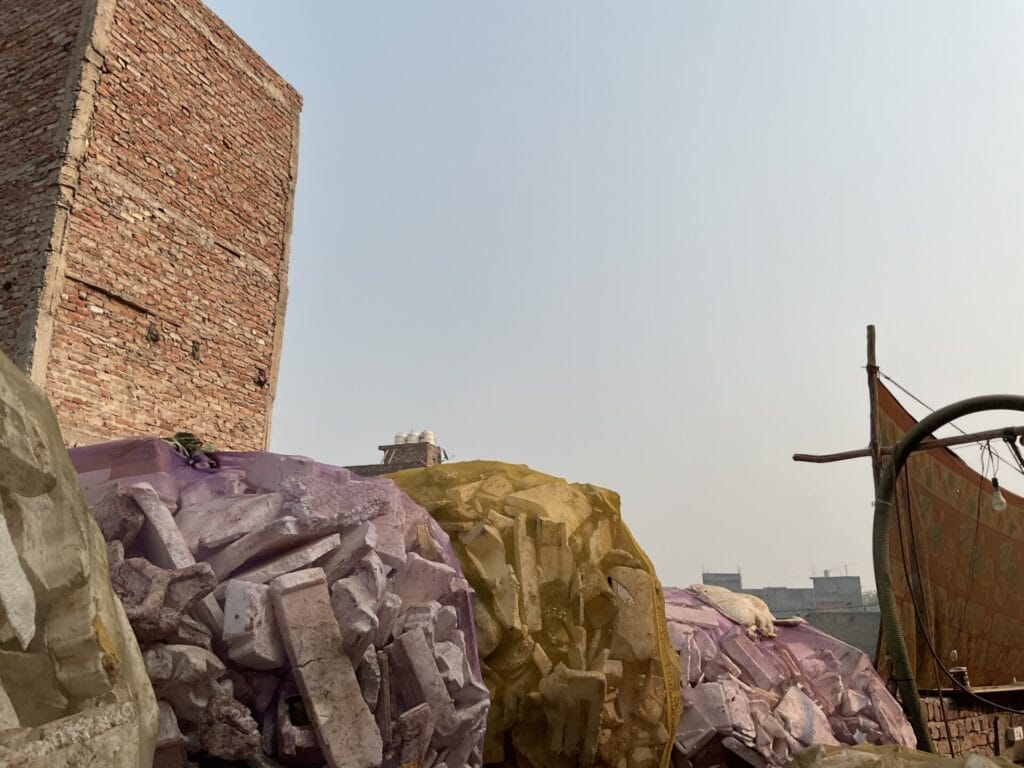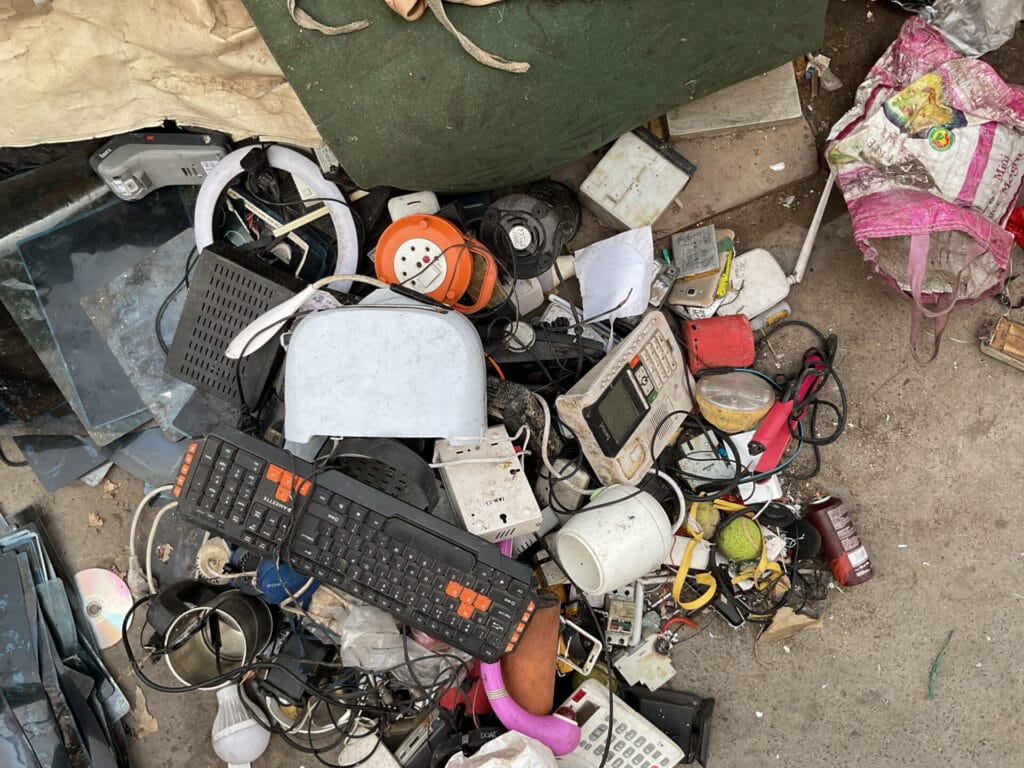“There isn’t much garbage coming to the landfill now,” says Rahim, 36, a waste picker working in the vicinity of Bhalswa. “Earlier, we would retrieve e-waste alone worth 500-700 rupees, but now it’s dwindled to a mere 150-200 rupees.”
Saira Banu, 40, another waste picker, says “Whatever waste gets dumped these days, the trucks pick them up at night, leaving almost nothing for us. It’s no longer as profitable as it used to be in the past years.” Saira has been working for over two decades around Bhalswa. “I used to come here from Jahangirpuri to collect waste before marriage, and I’m still earning my bread through the landfill.”
It is not only Saira who faces this uncertainty and struggle, but also another 10,000 odd waste pickers in the vicinity of Bhalswa. It stems from the Delhi government’s urgent initiative to dismantle the waste tower by May 2024, resulting in the potential clearance of up to 34 acres of land. A report submitted to the National Green Tribunal (NGT) in early 2023 says that 36% of the 8 million tonnes of waste at Bhalswa has already been removed.
What’s at stake?
For the Delhi CM, the removal of Bhalswa is more significantly the elimination of a visual ‘eyesore,’ with the potential for repurposing the land for other uses, the specifics of which remain undisclosed. But the ramifications of the move extend beyond the environmental; it also directly impacts the livelihoods of numerous waste pickers associated with it.
Read more: ‘Samman, Suraksha, Adhikar’: Where we have failed the true warriors of the Swachh movement
Pointing towards the housing and shanties surrounding the area, Saira says, “All these shanties and houses around the landfill are solely employed at the landfill. Some collect and sell, others recover recyclables through segregation, and many recycle the waste captured from the landfill”
This assertion by Saira becomes evident when one observes the garbage mountain closely, where numerous shanties and houses dot the landscape, with people meticulously sorting waste into various categories before selling it.

Despite the government’s efforts to adopt seemingly structured methods such as waste-to-energy plants and disposing of inert waste in low-lying areas of the city, the efficacy of waste management practices remains questionable.
“We are dealing with waste at the site only. These incineration plants (waste-to-energy units) where garbage is burnt aren’t just burning plastic, but also us, people whose livelihoods depend on it,” says Saira, who is actively involved in unions and acutely conscious of the environmental impact of her work, “The kabadiwalas who collect waste from door to door, those who go to the landfill to collect waste, and the ones who segregate it at our houses. We even try to manage the waste that is otherwise challenging to remove.”
Saira also points out that these government-established plants are creating even more pollution as they burn the waste — everything mixed together, even the plastic in it. But the poor, who are helping to recycle, are always blamed.
Read more: Unearthing invisible layers of life near Delhi’s Bhalswa landfill
Poor planning
Mirza, a 70-year-old former waste picker, raises another pertinent question, “If you are taking away our source of earnings, why aren’t you giving us new work?”
Mirza, along with his family, arrived in Bhalswa in 2002. “Before that, we lived in Shastri Park in Shahdara, on the other side of the Yamuna. We were working in kabadi (waste) there as well. Bhalswa felt more profitable, so we shifted here,” he says.

When questioned about the site’s impending closure, he remarked, “We don’t know where we will go when this landfill is gone. Maybe the city will give birth to a new landfill, and we will go settle there.”
While the removal of the landfill is crucial due to the environmental threats it poses to its surroundings, the government seems to lack clear plans on how the region will address all associated issues that have emanated from its existence over so many years.
Note: The author is one of six selected Fellows for the “Citizen Matters – Urban Environmental Reporting Fellowship 2023” focusing on the Delhi-NCR region. This short piece was produced as part of his work under the Fellowship.